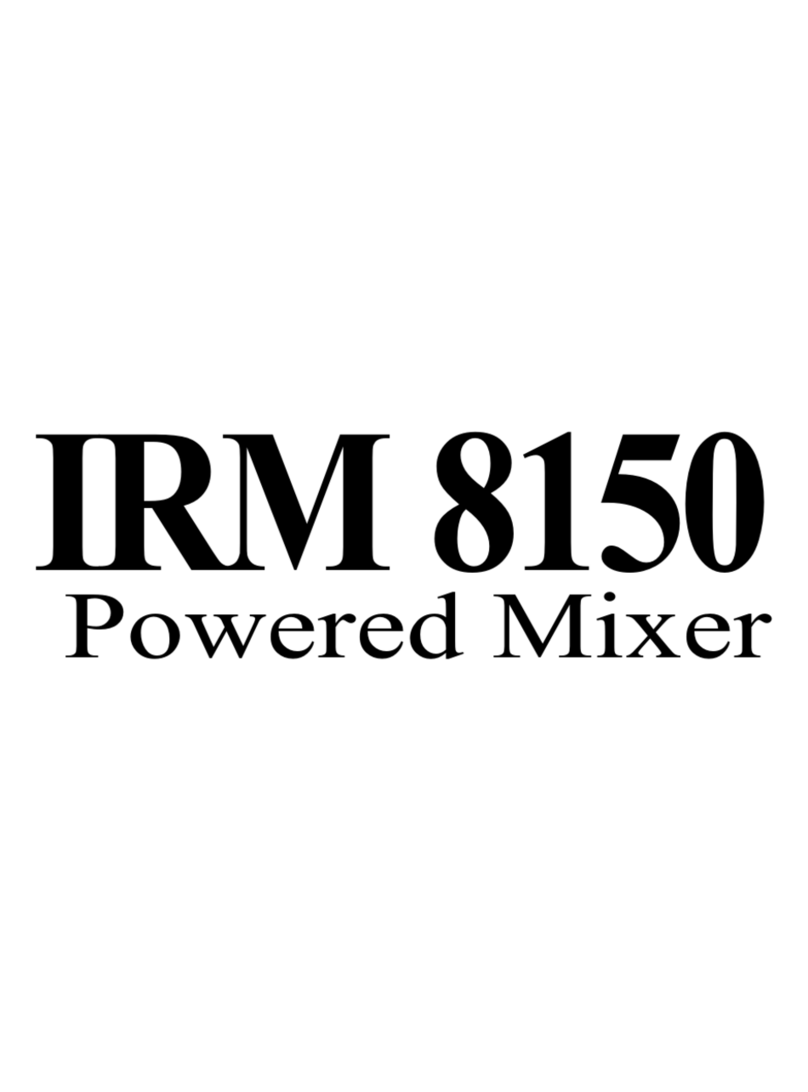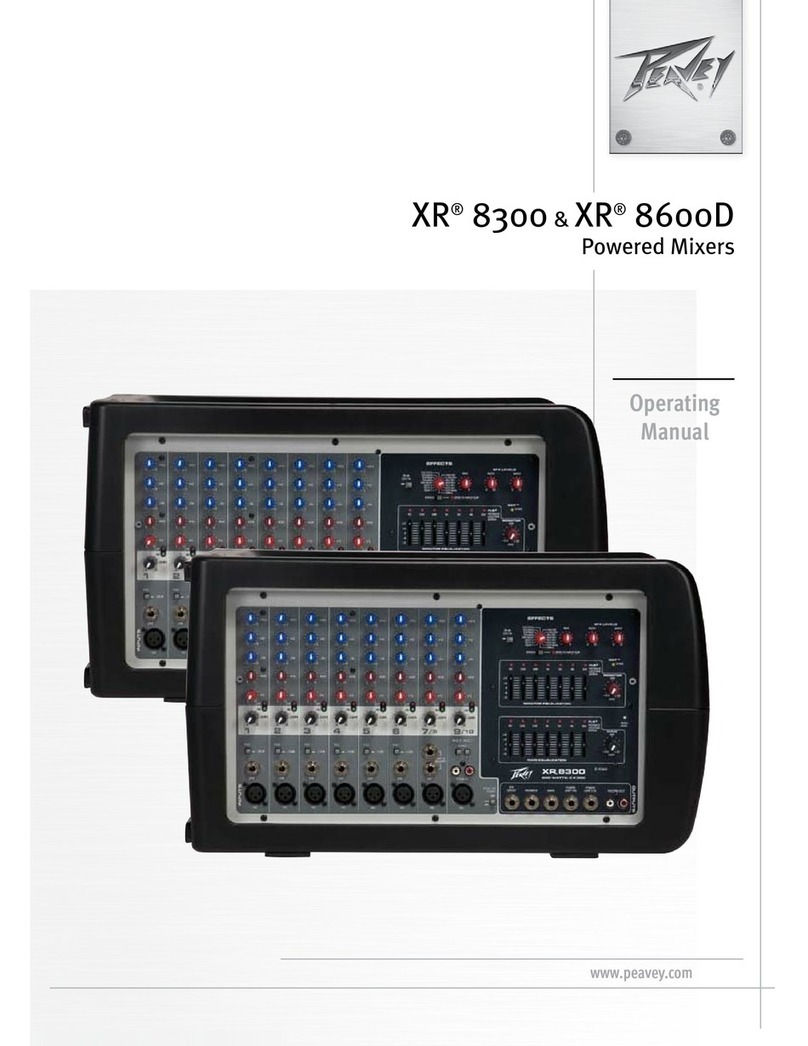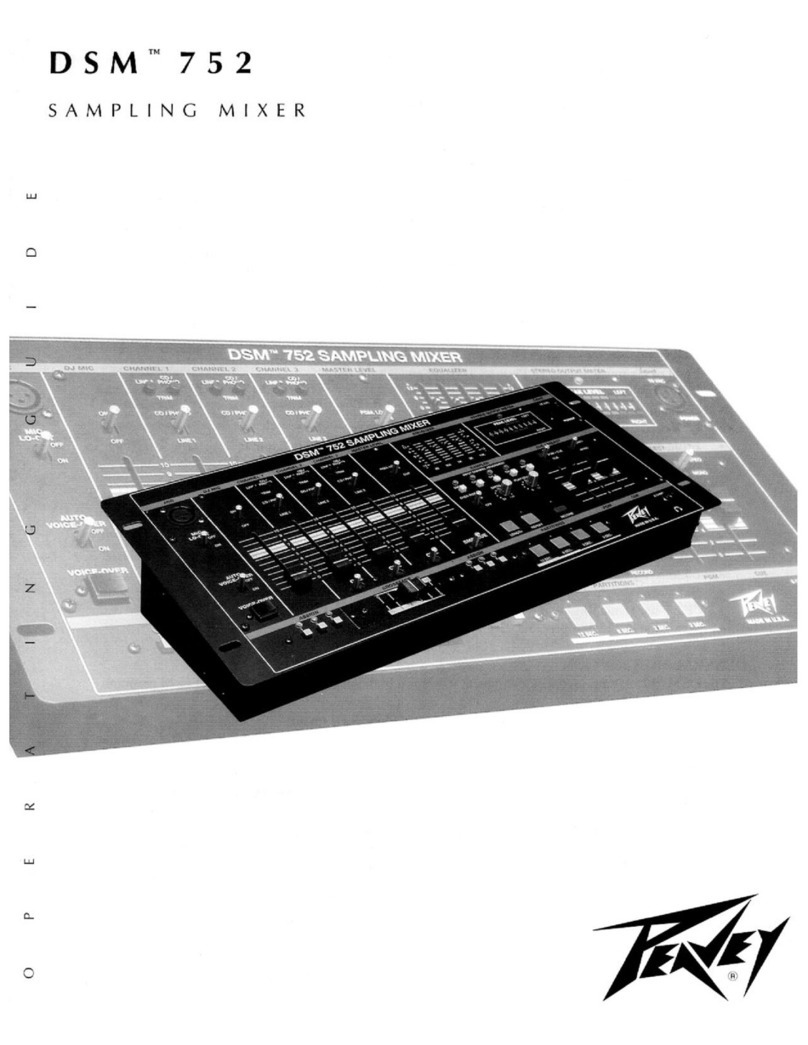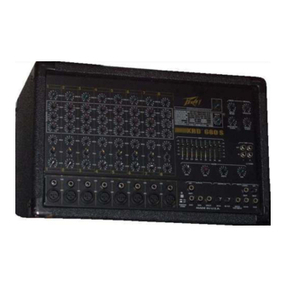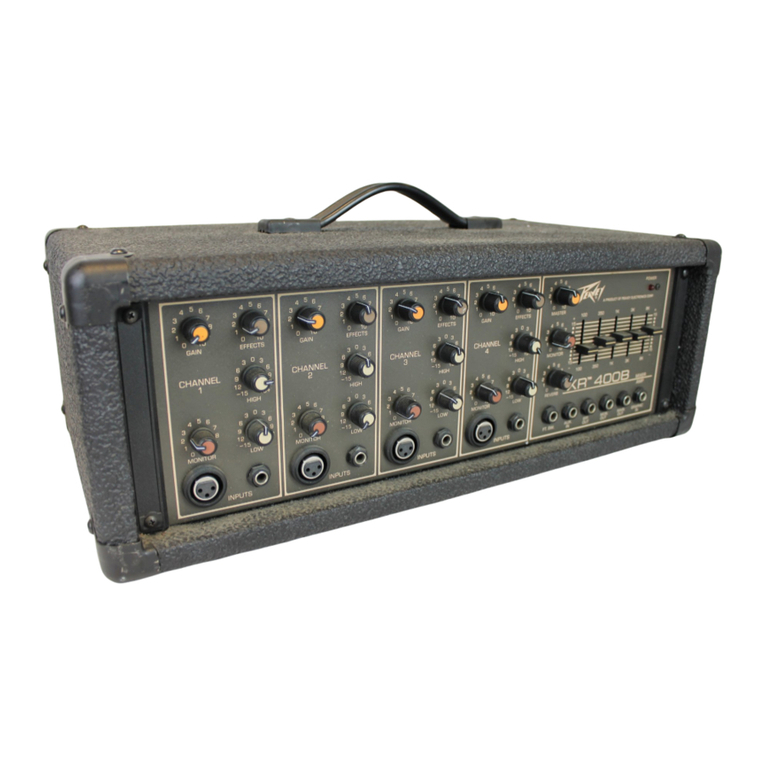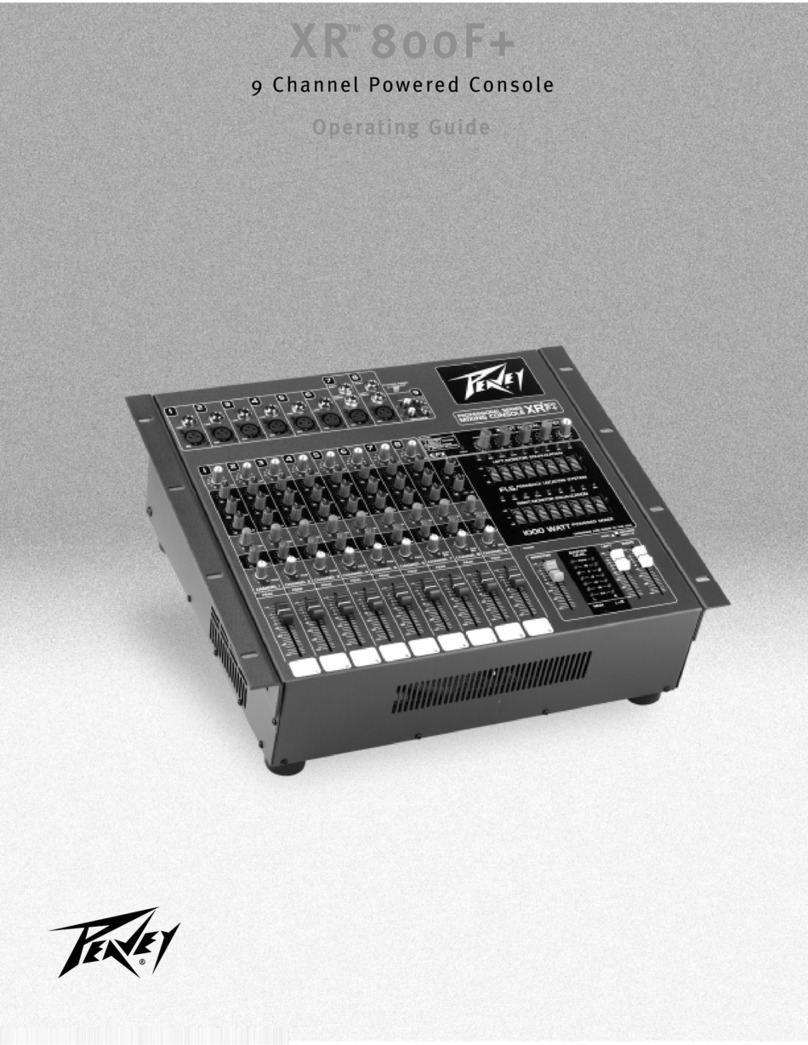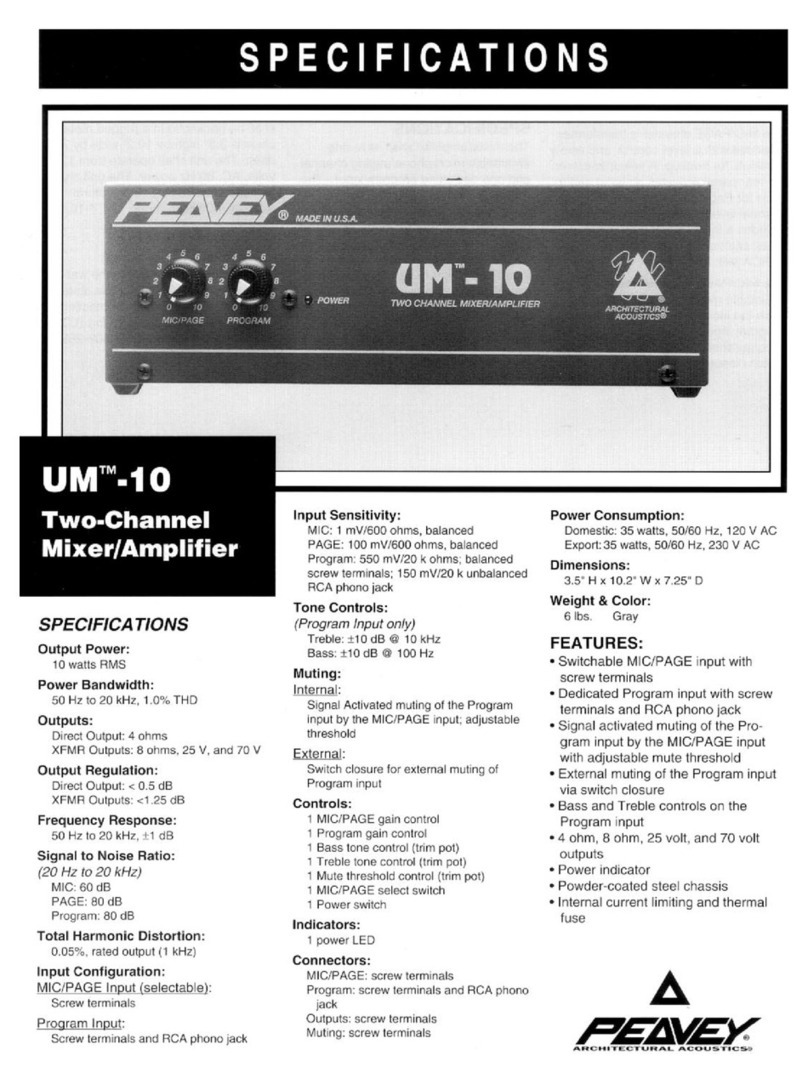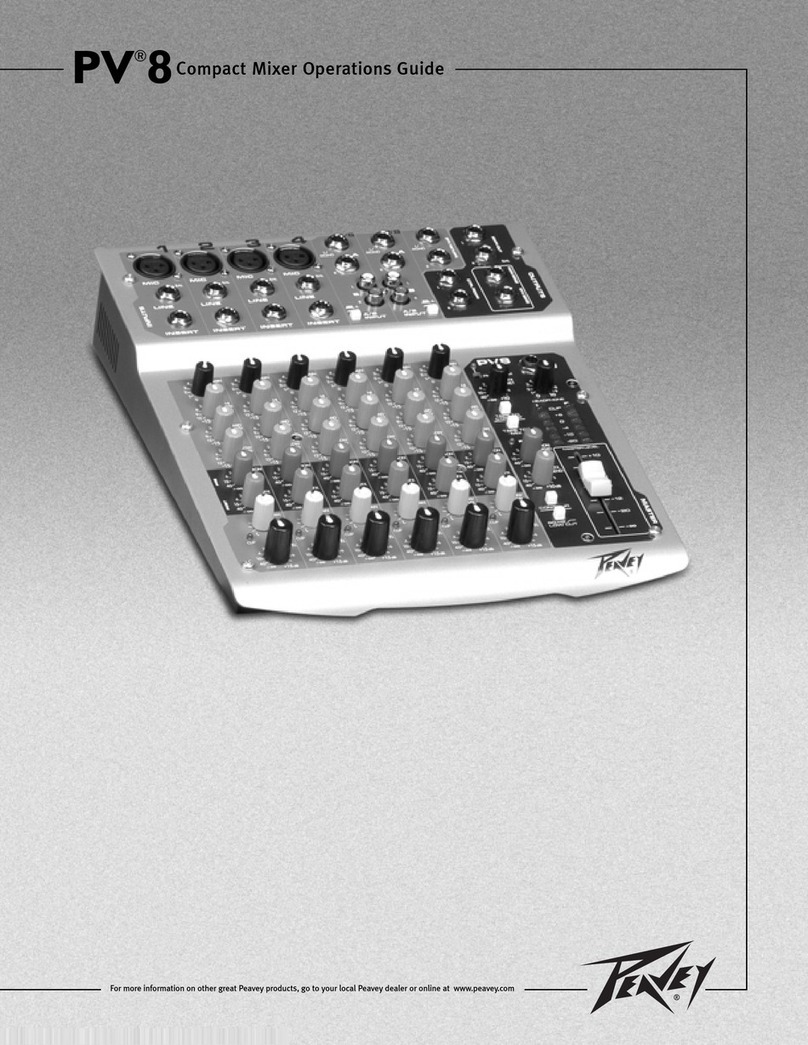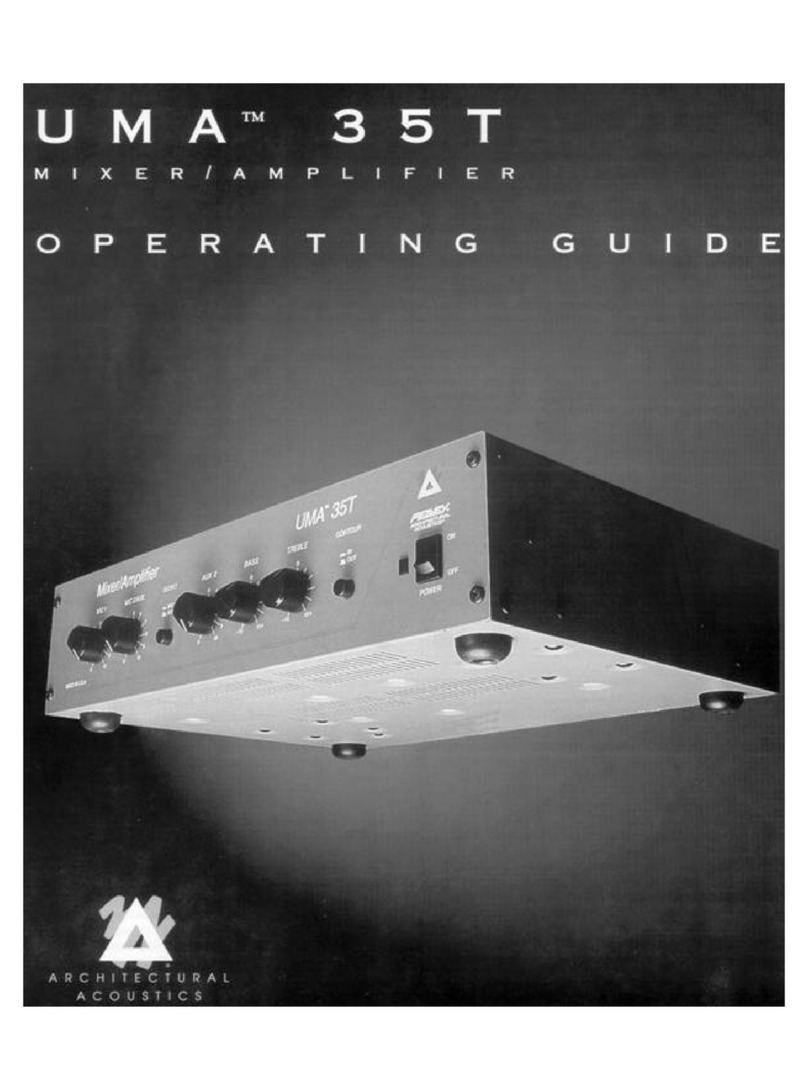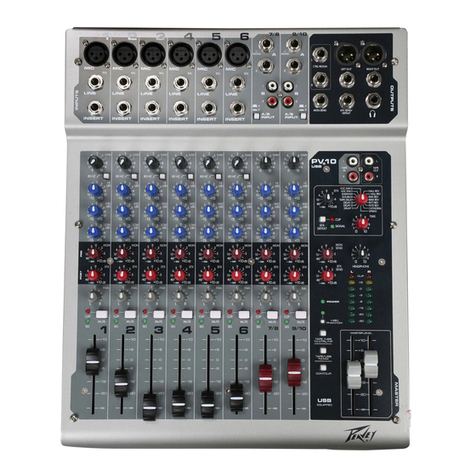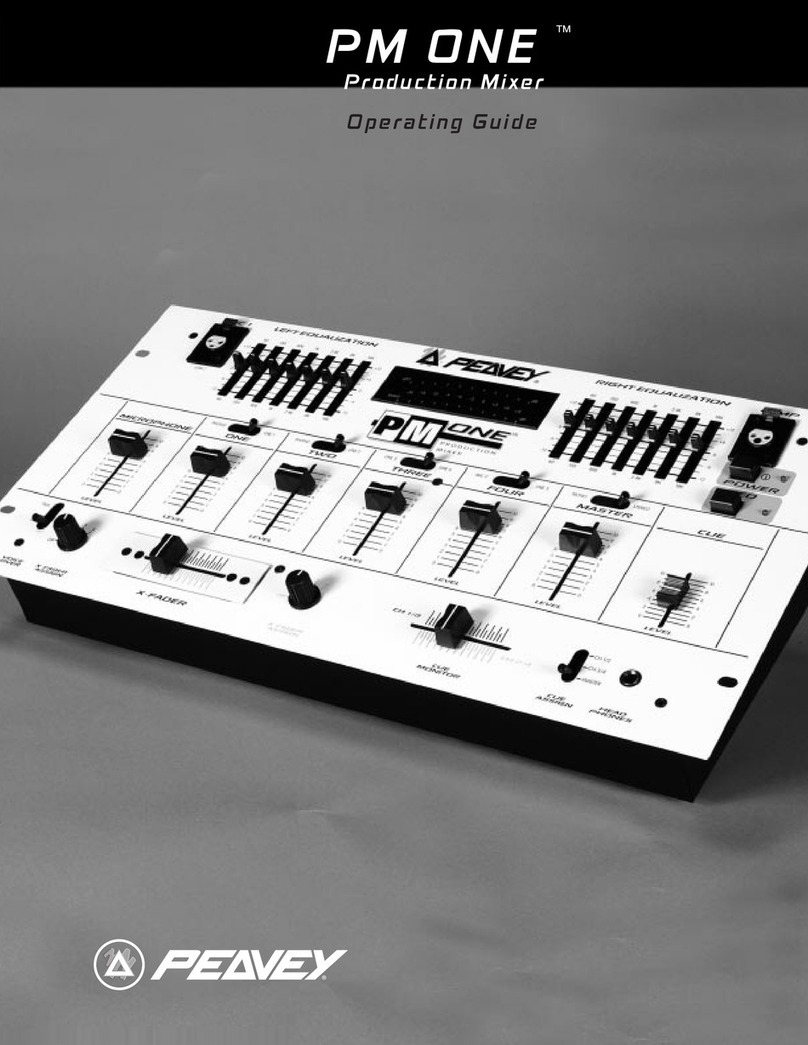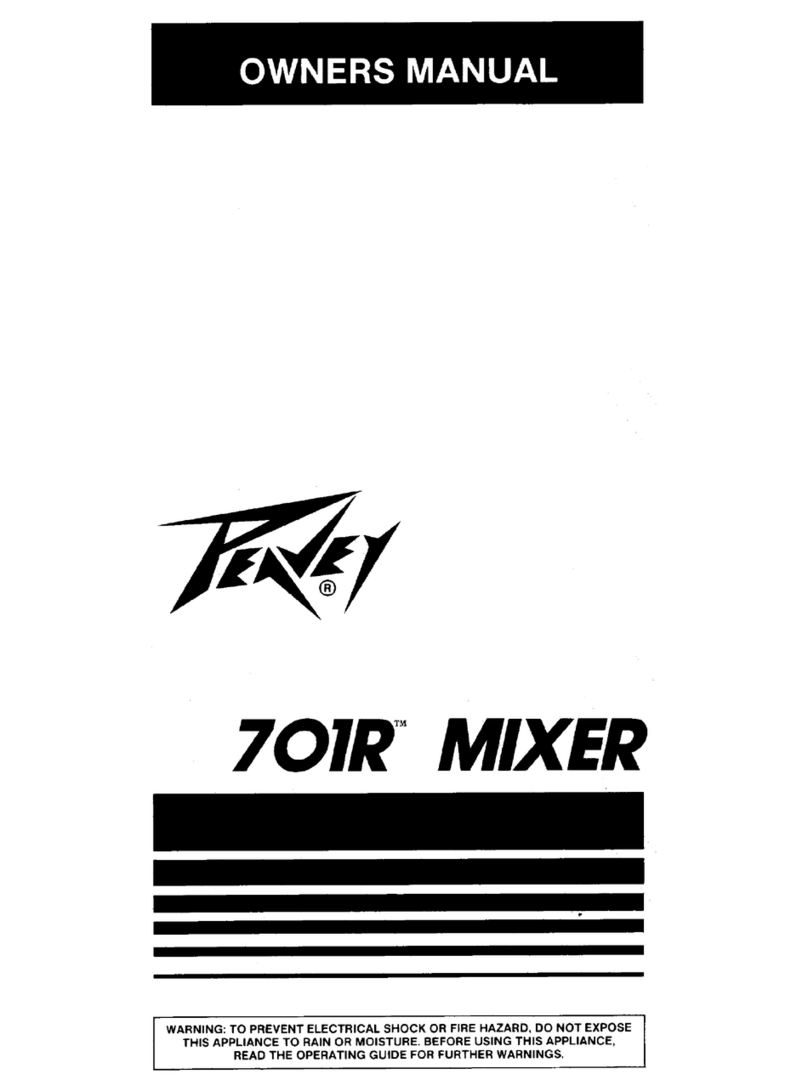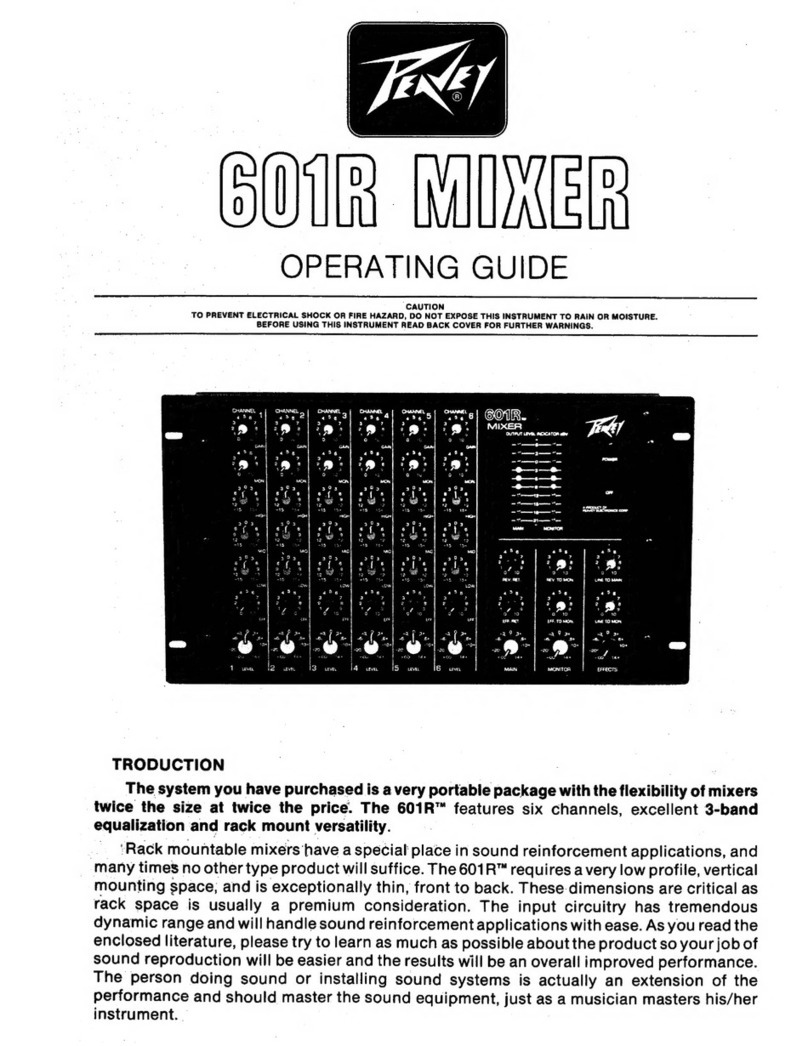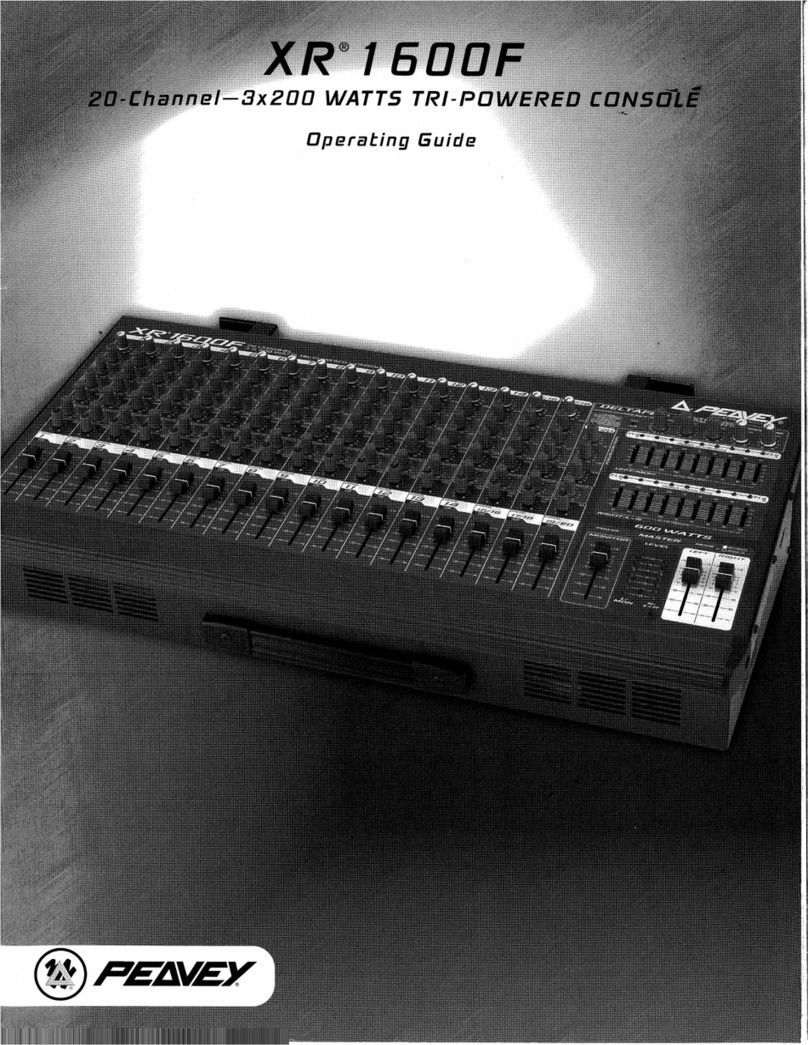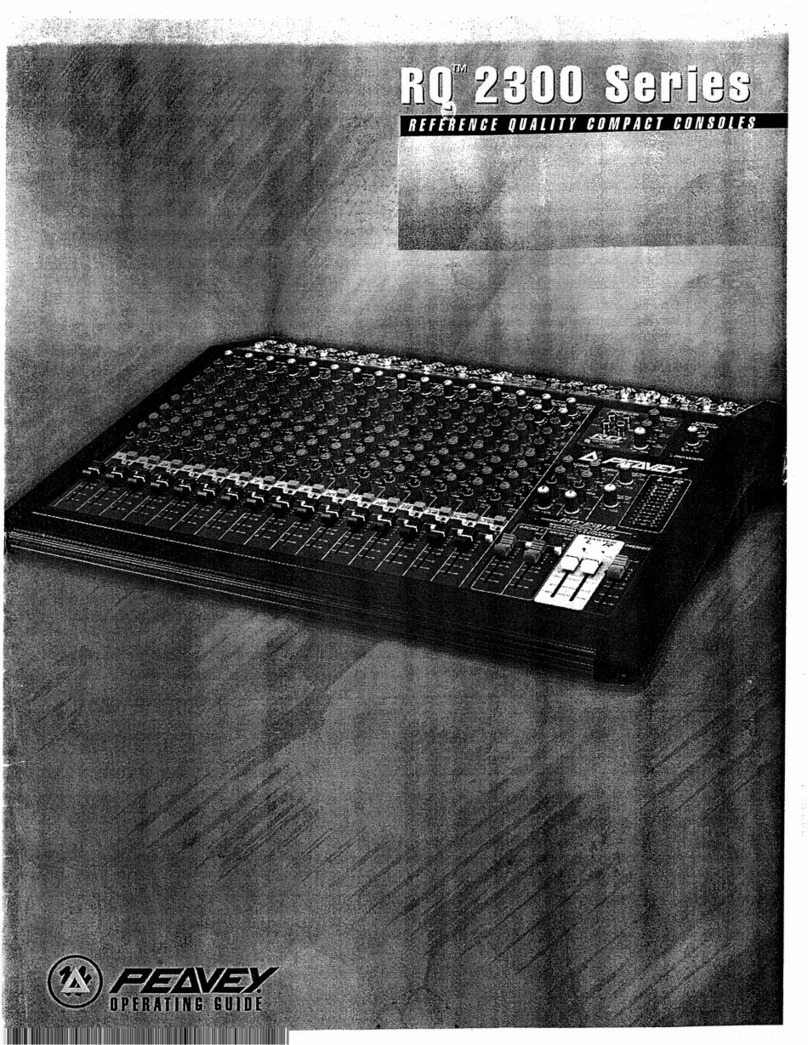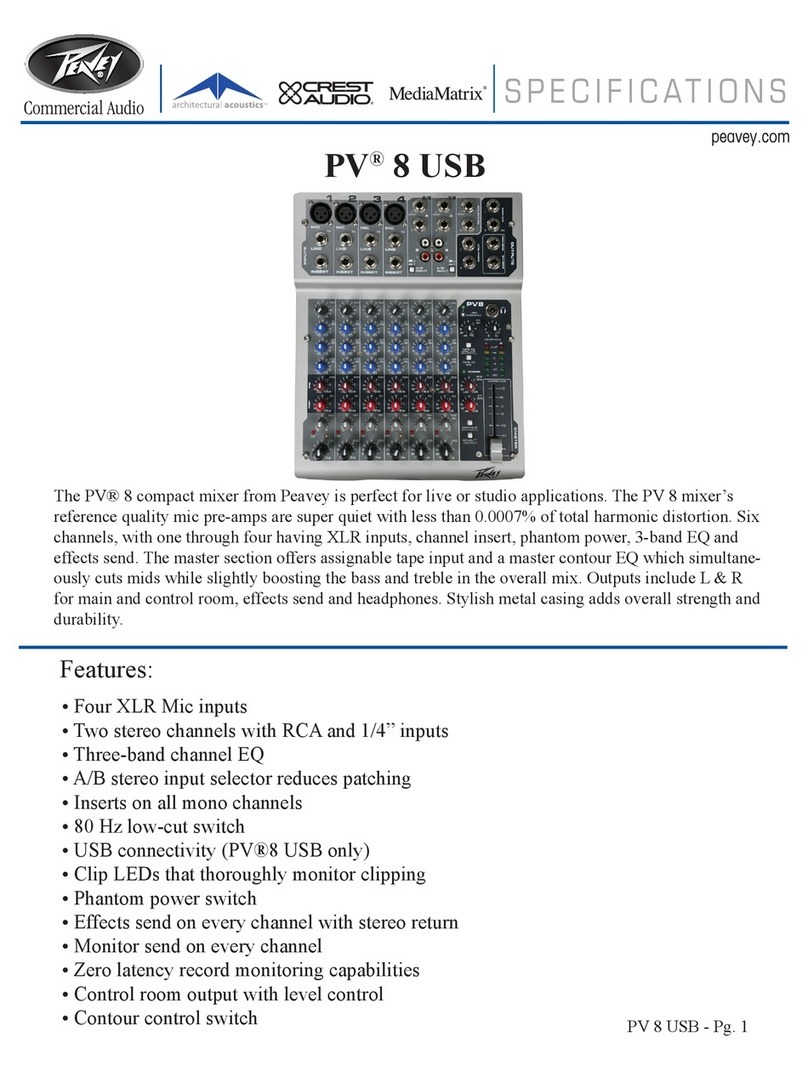17. PRESET: Selects the effect preset from the list below.
EFX Presets
PRESET NAME TIME/SIZE COLOR/TONE
1 Chamber Time: 150 to 5,000 ms Damping (High Frequency)
2 Plate Time: 100 to 4,000 ms Damping (High Frequency)
3 oom Time: 150 to 5,000 ms Damping (High Frequency)
4 Cathedral Time: 100 to 8,000 ms Damping (High Frequency)
5 Spring Time: 150 to 5,000 ms Damping (High Frequency)
6 Gate Time: 150 to 500 ms Damping (High Frequency)
7 everse Time: 150 to 500 ms Damping (High Frequency)
8 Delay + everb Time: 0 to 225 ms everb Time: 0 to 5,000 ms
9 Bright Delay Time: 0 to 500 ms Feedback: 0 to 99%
10 Warm Delay Time: 0 to 500 ms Feedback: 0 to 99%
11 Dark Delay Time: 0 to 500 ms Feedback: 0 to 99%
12 Ping Pong Delay Time: 0 to 500 ms Feedback: 0 to 99%
13 Chorus ate: 0.125 to 8 Hz Depth: Best Set Full CW
14 Phaser ate: 0.250 to 16 Hz Depth: Best Set Full CW
15 Flange ate: 0.10 to 2.5 Hz Depth: Best Set Full CW
16 otary Speaker High Speed: 0.50 to 25 Hz Width: 0 to 100% CW
18. TIME/SIZE: In everb and Delay presets, this control adjusts the time of the particular reverb or delay;
in Chorus, Phaser, and Flange, it adjusts the rate of each. In otary Speaker setting, this adjusts the speed
of the speaker rotation.
19. COLOR/TONE: Adjusts the high-frequency content of the effects signal. (While using a delay this
control adjusts the feedback or depth.)
20. EFX TO MON: Controls the amount of effects signal sent to the monitor mix. This control allows effects
to be heard from the stage via the monitor.
21. EFX TO MAIN: Controls the amount of effects signal sent to the main mix.
22. FLS®(Feedback Locator System®): These LEDs illuminate to indicate the frequency band of highest
energy. When feedback occurs, this system will automatically indicate the graphics slider to use to decrease
that frequency band’s gain in order to lessen or eliminate feedback. (NOTE: These LEDs illuminate with any
audio signal, not just during feedback.)
23. GRAPHIC EQUALIZERS: These nine-band equalizers are fixed on one-octave centers. They are
designed for 12 dB of cut and 12 dB boost. They are connected directly to their power amplifier inputs.
24. SYSTEM MODE: This switch is used to configure the X 684 as either a stereo or dual mono amplifier.
It is recessed to prevent accidental switching during a performance. Use a non-metallic object to change the
switch position (e.g., a toothpick). The X 684 is shipped from the factory in the default setting of Left Main to
the upper EQ and ight to the lower EQ. When this switch is depressed it switches the lower EQ to (mono)
PA Left + ight. The upper EQ then becomes the monitor signal only, creating an entire PA and monitor mix-
ing system in one small, easy-to-carry package. And this change is accomplished without a single patch cord!
25. MONITOR LEVEL: Sets the overall level of the monitor signal that is sent to the Monitor Output Jack.
This control also sets the monitor level going to the power amp when in Main/Monitor mode (see System
Mode #24).
6



